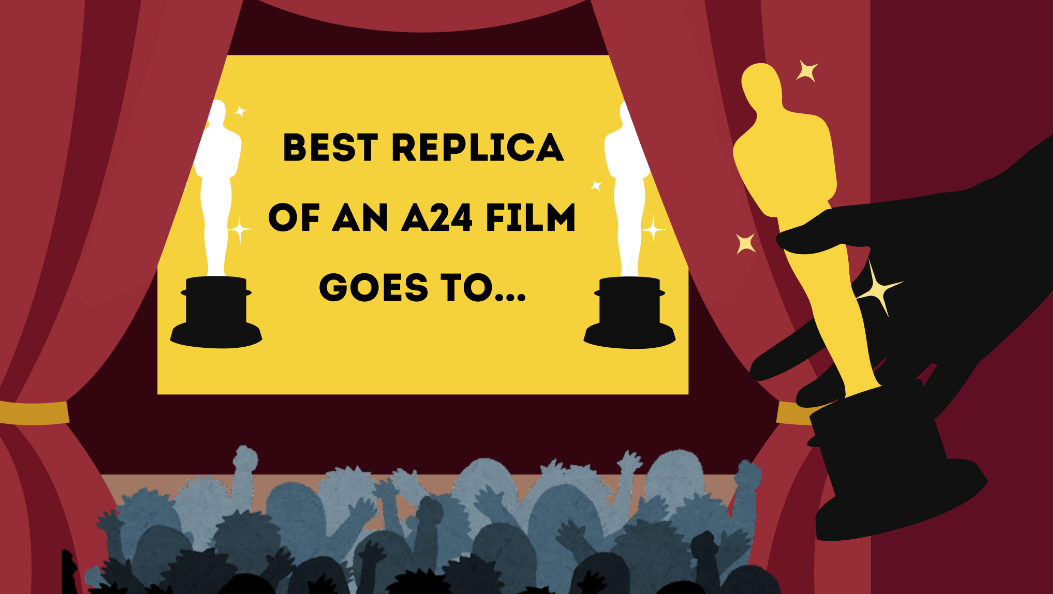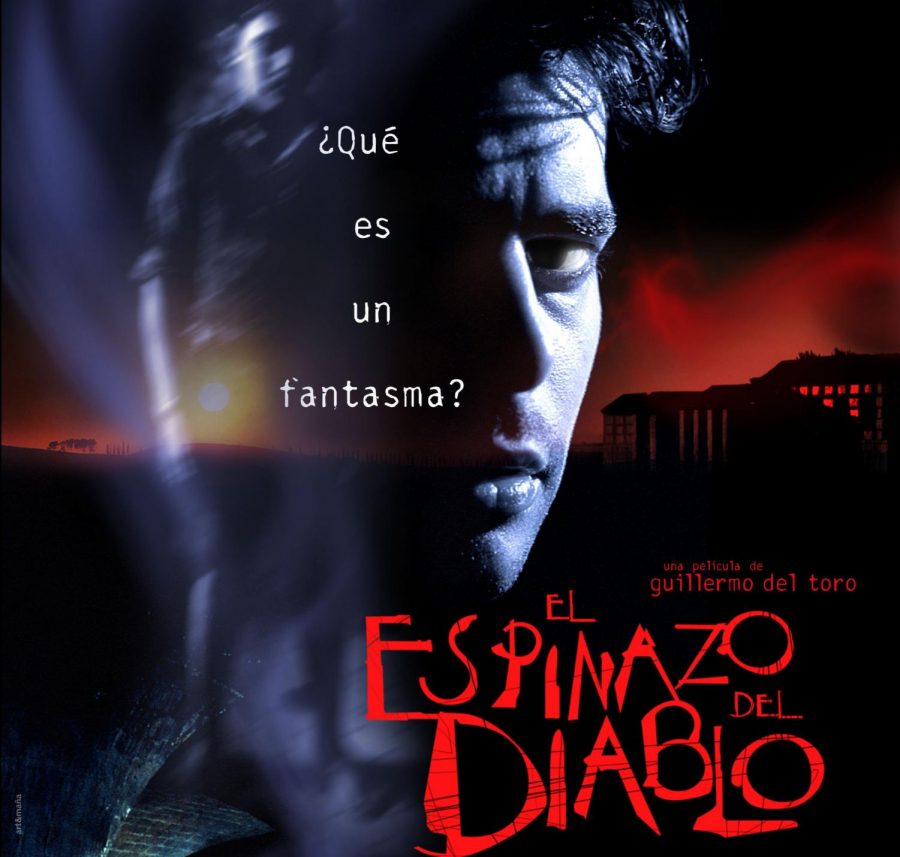As award season heats up, films from various production companies, including “Nosferatu”, “The Substance”, and “Emilia Perez,” are lining up for Oscar nominations, occurring on March 2nd. One common trait between the nominations is their distinctive film styles, which seems to derive from one specific production company.
From the dark and moody lighting and avant-garde themes to outrageously angled views and unconventional storytelling, these characteristics seem to be similar to one production’s aesthetic– A24.
Some may say the work produced by them isn’t what people are used to seeing. Others may detail their work as abnormal or peculiar, but no one doubts the impact of their individualistic styles of filming. Over the years, the indie movie production company, A24, has become a household name for its choice of film styles.
If you are a horror movie fanatic, you would recognize “Midsommer” starring the famed Florence Pugh. They’ve also produced hits such as “Everything Everywhere All At Once,” “The Iron Claw” and “The Whale”.
Sometimes, when watching an A24 film, you experience a multitude of emotions as a result of the film’s cinematic performances. On one hand, audiences develop the creeping fear of realization as the movie slowly reveals that they’re watching from a character’s unreliable point of view.
In “Saint Maude,” the film follows a devout religious follower named Maud, and as we continue to watch, we discover that Maud has a unique outlook on life. Things take an unconventional turn as we learn more about Maud’s past, and in the end, we see the truth as her life events slowly disburse into quantitative delusions as a result of her untreated mental illnesses.
On the other hand, the production company can create a deep sense of vulnerability and self-agony in sensitive and difficult settings.
In “A Ghost Story,” the film follows a married couple who seems to live a loving life until the husband passes in a tragic accident. From the accident, we see a figure covered in a white sheet whom we assume to be the ghost of the deceased husband. We watch as he slowly makes his way back home and watches as his wife grieves over his death; he later realizes that he isn’t able to do anything else but observe the world moving on without him.
The film doesn’t have any particular dialogue; it’s ultimately a quiet film as the ghost continues to observe, with only moments of noise coming from everyone else entering the home he can never leave. While the ghost doesn’t say anything, the audience feels a sense of anguish as people come and go from the place where the entity remains stagnant forever.
A24’s surrealistic technique implements a depth of emotions that would typically be far gone in other films, as the production company takes bizarre approaches to their cinematography.
Recently, however, there has been an increase in movies produced with similar distinctive tones and styles that replicate A24’s.
With the rise of popularity, how has their unique influence impacted other production companies and their approach to cinema?
In an article by the Producer’s Toolbox, they described the film production company’s presence as being disruptive within the industry, as they completely changed what cinema was. From innovative marketing to auteur filmmaking, A24 has struck the film industry with its outstanding characteristics.
One characteristic that sets them apart from other production companies is the distinctive aesthetics each film has. In Adya Chetyia’s 2023 article for Trill Mag, she details the extensive list of genres the production company sought after: romanticized realism, tweaked nostalgia, existential angst and original voices. These genres create an incredibly individualistic atmosphere that becomes distinguishable from other movies in similar ones. Because of this, people may recognize their films to be in their category, specialized for A24-produced movies.
As stated before, A24 films create an emotional environment for their characters and audience. Often enough, their films leave the audience with an intense emotional understanding that the film doesn’t intend to have a genuine happy ending, even though we see the characters in bliss.
In “Midsommer,” the ending scene shows Dani, Florence Pugh’s character, looking above the camera with a distant look in her eyes and an almost solemn yet relieved smile on her face as people scream, cry and dance in the background. Because of her facial expression, we’re led to believe that Dani is finally happy, as opposed to how she was at the beginning of the film. Yet, Dani’s smile leaves the audience feeling disturbed as they endure the events that led up to this ending scene.
This authentic output of aesthetics and emotion has been reflected in mainstream production companies.
“Nosferatu,” a rendition of its predecessor Nosferatu, sheds light on the similarities the film has to the styles portrayed by A24. In Annie Kapur’s 2019 article from Vocal Media, she describes the film as portraying normality vs abnormality, a theme that is heavily prevalent in A24’s works.
In “Nosferatu,” the dramatic lighting and presentation of shadows play into the Gothic horror effect they are trying to depict— playing into its emotionally charged storyline that is designed to captivate their audience. Based on looks alone, the movie sets up a grotesque yet alluring setting that we can see replicated in A24’s “Hereditary,” where shadows and lighting are seen to represent isolation and a looming evil presence, attracting characters towards their devastations.
The use of lighting and visuals isn’t the only way the production company can contract an audience. A24 continues to create innovative storytelling by introducing anomalous plots to their films. In their upcoming film, “Death of a Unicorn,” they take a well-known and beloved mythological creature and twist it into a murderous monster in their take on a horror-comedy movie. In their efforts to fabricate outlandish narratives, A24’s methodology in the industry is slowly trickling down to other production companies.
We can find this depiction of innovative storytelling in films such as “Long Legs,” which was produced by Saturn Films et al, “Subservience,” produced by Millennium Media, and “Presence,” produced by ALLaBorde Films et al. All are movies derived from different companies but could be mistaken as A24’s films for the similarity of film styles.
Movies have become more likely to express this unique perspective of filmmaking, conducting niche themes and eccentric visuals; all thanks to A24.
So the next time a movie with a particular approach is released, viewers may take a moment to step back and make the comparison to what A24 already had to offer; for the industry and themselves.






